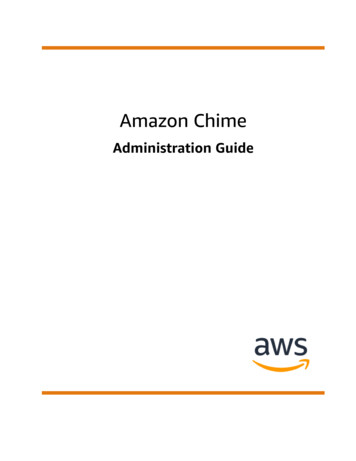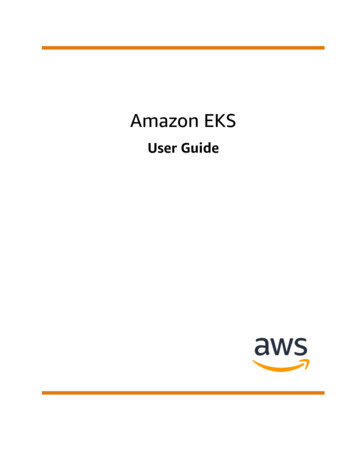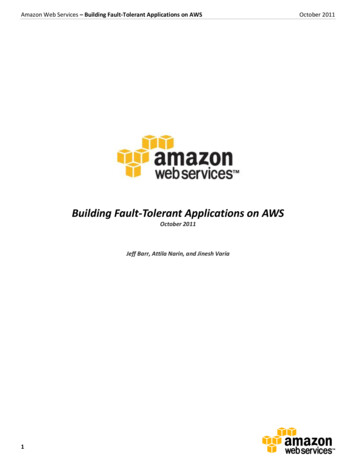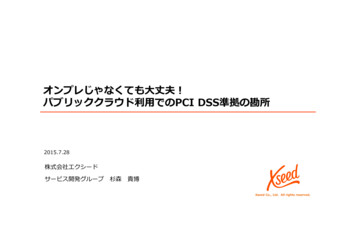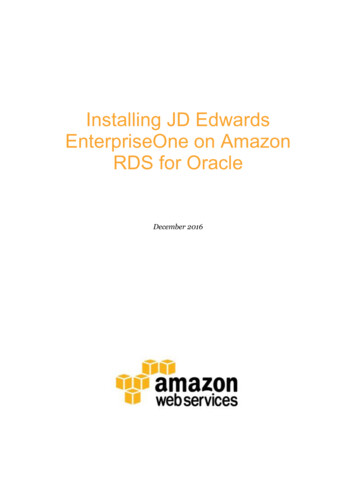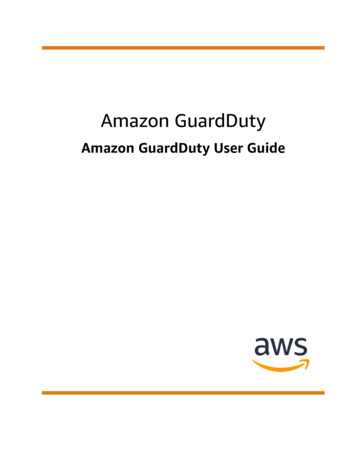
Transcription
Executive InsightsVolume XX, Issue 47Delivered: Your Amazon Package With Surgical Suppliesand Medical Devices?Amazon’s recent acquisition of the onlinepharmacy startup PillPack has many wonderingwhether the ubiquitous online retailer is on theverge of disrupting healthcare. Although itsinitial foray into the space is in drug distribution,expansion into medical device/suppliesdistribution in the near term seems likely for theinternet giant that’s accustomed to disruptingbusiness as usual.Given Amazon’s user familiarity, deep expertise in distribution,operational scale, existing B2B and B2C platforms, nascentpresence in healthcare, and massive reach, it seems only a matterof time before the company further expands in this space andthreatens to change the existing medical supplies distributionparadigm to one that centers on ecommerce. No wonder medicalsupplies distributors are anxious about a more substantialAmazon entry into medical supply distribution.And why wouldn’t Amazon want to more substantially participatein the medical supplies market? Medical devices and suppliesrepresent more than 117 billion in annual expenditures in theU.S., with several major medical supplies distributors capturinga good chunk of this spend (e.g., Cardinal Health’s medicalsegment reported 13.5 billion in revenues in 2017, Owens &Minor 9.3 billion, Patterson Medical 5.6 billion and HenrySchein 3.3 billion). Already, Amazon has acquired licenses formedical supplies distribution in 43 states and is selling variousmedical supplies through its Amazon Business platform (seeFigures 1, 2).But how far can its reach go, especially in the near term? Arefears about Amazon taking over medical supplies distributionoverblown?Although Amazon undoubtedly will ultimately play a significantrole in transforming medical supplies distribution, we believethe hype far overshadows the potential near-term impact ofAmazon’s entry into the space — primarily because its capabilitiesare relatively limited and the existing medical supply distributionchain is already remarkably efficient.Although the company’s strengths meet a few key criteria forproviders (and manufacturers) — such as rapid shipments, broadproduct coverage, and simple and familiar user interfaces —Amazon’s value proposition in broad-based healthcare distribution(particularly to hospitals) is, to be frank, thin (see Figure 3).Amazon must address several key gaps and limitations beforeit can effectively compete with traditional medical suppliesdistributors. Absent the infrastructure to provide high-volumeconsumable products distributed to hospitals, reimbursabledevices and capital equipment, the company is more suited toDelivered: Your Amazon Package With Surgical Supplies and Medical Devices? was written by Jonas Funk,Managing Director, Sheila Shah, Engagement Manager, and Ilya Trakhtenberg, Principal, in L.E.K. Consulting’sMedTech practice. Jonas, Sheila and Ilya are based in Chicago.For more information, please contact medtech@lek.com.
Executive InsightsFigure 1Amazon in the newsRecent news headlines regarding Amazon’s investment in healthcareHospital supplier shares dive asAmazon reportedly ramps up medicalsupply businessCNBC – Feb. 13, 2018Amazon’s entry into health carestarts with gloves, dental bonding agentsand syringesThe Washington Post – Feb. 13, 2018Amazon’s Latest Ambition:To Be a Major Hospital SupplierThe online retailer is pushing hard to expand its foothold in medical supplies,creating a marketplace where hospitals shop to stock emergency rooms,operating suites and outpatient facilitiesThe Wall Street Journal – Feb. 13, 2018Amazon poised to deliver disruption inmedical supply industryFeedback from durable medical equipment/medical supplyvendors about potential impact of Amazon“Everyone in the supply chain is nervous It’s a low-level paranoia thatAmazon will drive down profitability”McKesson Ventures Managing Director Tom RodgersCNBC – July 24, 2017“Significant cost pressures will persist up and down the value chain,resulting in stepped-up competitive dynamics, margin pressure andadditional industry consolidation”Owens & Minor CEO Paul Cody PhippsModern Healthcare – June 10, 2017Modern Healthcare – June 10, 2017Existing evidence of success with Amazon Businessand, specifically, Amazon Business ProfessionalHealthcare Amazon Business launched in 2015 for government,education and healthcare and now has over 1 millioncustomers Amazon Business also has over 85,000 sellers on its platform Amazon Business is even offering business analytics and loansto its sellers in the U.S., UK and Germany In 2015, the launch year, Amazon Business saw over 1 billion in salesSource: L.E.K. research; company websites; The Wall Street Journal; Modern Healthcare; The Washington Post; USA Todaydistributing low-volume, one-off purchases among fragmentedcare sites with individual decision-makers (e.g., small physician ordentist offices).2. Although Amazon can meet some customer needs acrosscare settings, its current capabilities are insufficient to meetthe most critical needs of many customers.That could change if Amazon were to acquire one of the majorhospital distributors, such as Owens & Minor, or enhance itscapabilities to include bulk shipping, LUM (low unit of measure)and stocking, inventory management, and supply chain advisoryservices, to name a few. Similarly, until it develops patient billing,payer contracting capabilities and medical claims submission/processing capabilities, it will be unable to distribute reimbursedhome-care products.3. Low medical supplies distribution margins (and already highlevels of market efficiency) diminish the attractiveness of andrationale for Amazon investment vis-a-vis other potentialgrowth opportunities.Our view on Amazon’s potential role in medical suppliesdistribution is grounded in three key observations:1. The role of medical supplies distributors extends far beyondorder fulfillment and varies significantly across care settings(e.g., hospitals vs. nonacute-care settings).Page 2 L.E.K. Consulting / Executive Insights, Volume XX, Issue 47We discuss each of these below.1. The role of medical supplies distributors extends farbeyond order fulfillment and varies by care settings (e.g.,hospitals vs. nonacute-care settings). Medical suppliesdistributors fill several roles as the intermediary betweenmanufacturers and healthcare providers across acute-, nonacuteand home-care settings, including order fulfillment, demandcreation and influence of product selection, and consulting andadvisory services.
Executive InsightsFigure 2Current medical supplies on Amazon Business*Apparel andglovesExam s urgical glovesClampsStethoscopesSurgical gownsBiohazardwaste disposalbagsRetractors al needlesProcedure traysScalpels andlancetsOtoscopesScrubs and labcoatsDisinfectantwipesWound closuresSpeculaPatient gownsHand sanitizersFace masks andshieldsPen lightsSphygmomanometersFluidcollectionWound careand dressingBloodcollection tubesBraces calsuppliesNeedle holdersOperating roomconsumablesSkin markersWound closuresMedical tapesSterilizationpouches*As of 3/21/2018Source: L.E.K. research; company websites; Amazon.comHealthcare providers value many of the broader services thatdistributors offer, and Amazon is not currently well-equipped toassume these roles.With respect to order fulfillment, distributors ensure timely andefficient delivery of products, coordinate with the manufacturerto process orders, request drop shipments, and provide servicessuch as LUM, on-site stocking and reordering.With respect to demand creation and product influence,distributors help inform, educate and standardize providerpurchasing through distributor sales representatives who canalso help manufacturers influence provider purchase decisions viacontracting and economic incentives.Finally, with respect to consulting and advisory services,distributors can serve as a central point of contact for billingand payments; assist providers with supply chain, inventoryFigure 3Opportunities for Amazon in medical supply distribution todayCustomer supply chain needs/complexity(e.g., inventory management, LUM, supplychain advisory services)HighLowNot likely to be impacted by Amazon in the near term(e.g., acute-care settings, reimbursable home-care products, larger nonacute-care facilities)Amazon could expand its capabilitiesin a number of ways to serve morecomplex customer and product needsProduct segments most aligned toAmazon currently(e.g., self-pay DME, small/fragmentednonacute-care facilitiespurchasing one-off products)Product needs/complexity(e.g., reimbursement, technical complexity, need for training, assistance during procedure)Page 3 L.E.K. Consulting / Executive Insights, Volume XX, Issue 47High
Executive InsightsFigure 4Amazon’s medical supply distribution strengths todayNonacute careImplantable and physicianpreference devices(e.g., ortho, ute carePhysician and dental offices, etc.Home careTypically directly fulfilled bymanufacturers that are ofteninvolved in assisting duringproceduresLower applicability forimplantables in most caresettings and directly fulfilled bymanufacturersPotential opportunity for Amazonto enable fulfillment to highlyfragmented care settings(e.g., ambulatory surgery centers)Not applicableAlready well-managed by highlyefficient mainline distributors(Cardinal, O&M, Medline) thatprovide LUM and inventorymanagement servicesWell-managed by highly efficientdistributors (e.g., McKesson,Schein) that provide inventorymanagement and other valueadded services that Amazoncannot provideAmazon may be able to carve outspace in specific products thatrequire urgent shipping, whichcurrent distributors cannot provideAmazon lacks patient billing andpayer contracting capabilitiesthat are required for reimbursedproductsAmazon currently is wellpositioned to offer patientsnonreimbursed productsHigh-value/complex capitalequipmentTypically directly fulfilled bymanufacturers that are requiredfor installation and technicalsupportTypically directly fulfilled bymanufacturers thatare required for installation andtechnical supportAmazon lacks patient billing andpayer contracting capabilitiesthat are required for reimbursedproductsAmazon currently is wellpositioned to offer patientsnonreimbursed productsOther(e.g., one-off, self-pay,nonrecurring, low-complexityequipment)Reasonably well-supported bymainline distributors that havelarge catalogs and existingpresenceAmazon may offer incrementalbenefit of convenience forindividual purchaserAlthough these offices arereasonably well-served alreadyby distributors, Amazon mayoffer incremental benefit ofconvenience (and potentiallylower pricing) for physicians/administrators who have morepurchasing discretion thanhospital staff doAmazon currently iswell-positioned to offer patientsnonreimbursed, self-pay productsLowHighCurrent Amazon capabilities fitmanagement, and clinical and nonclinical workflow; andeven provide on-site supply chain management. Withinhome care, distributors actually adjudicate patient billing andclaims questions directly with payers, saving providers andmanufacturers significant time and effort.2. Although Amazon can meet some customer needs acrosscare settings, its current capabilities are insufficient to meetthe most critical needs of many customers. Fundamentally,the true test of Amazon’s ability to disrupt the medical suppliesdistribution landscape is whether its value proposition willPage 4 L.E.K. Consulting / Executive Insights, Volume XX, Issue 47resonate with different segments of the market and drive shifts inhow and where customers purchase.Amazon’s value proposition lies in providing a wide variety ofproducts rapidly and easily in low-order volumes, but thosebenefits are more suited to fragmented and individualizedpurchasing rather than to centralized procurement departmentsthat are increasingly driving decision-making. Moreover, to betruly effective across care settings, Amazon’s offerings wouldneed to be customized to allow for differences in packaging,delivery frequency, etc.
Executive InsightsFigure 5Owens & Minor margins, past 10 yearsIn November 2017, Fitch downgraded Owens & Minor to “BB ,” claiming that itis expected to continue to face pricing and margin pressures through 2019.3Operating earnings(2008-17)Percentage of revenue2.52.5Owens & Minor completed two acquisitionsin 2014 (Medical Action and ArcRoyal)totaling 261.1 million (net of cash acquired).2.42.42.22.2Owens & Minor entered intoa purchase agreementto acquire the Surgical andInfection Prevention business ofHalyard Health for 710million and completed theacquisition of Byram 01220132014201520162017 7.2B 8B 8.1B 8.7B 8.8B 9B 9.4B 9.7B 9.7B 9.3BSource: Owens & Minor 10-Ks; L.E.K. analysisAlthough Amazon is well-positioned today with respect to certainproduct areas and channels (see Figure 4), the majority of caresettings and product types do not fit well with Amazon’s valueproposition.contracts with payers, patient billing capabilities and strategiccollaborations with manufacturers on how to deal with pricingissues), the question remains: Is medical supplies distribution anattractive market for the retail giant?Specifically, acute-care settings, where the bulk of medicalsupplies are purchased today, require incredibly high servicelevels, the ability to order in bulk and private-label products todrive savings. They also expect a variety of services that manydistributors offer, ranging from inventory management to kittingto address their complex and specific needs.While medical supplies distributors enjoy significant revenues,their margins tell another story. In fact, pure-play distributors(those that do not have a significant private-label presence) haveseen their margins decline steadily over the past 10 years (seeFigure 5). These low and declining margins are the primary reasonall the major medical distributors are expanding their highermargin, private-label/branded product portfolios. Medline, ahighly successful manufacturer and distributor of medical supplies,has long leveraged its distribution business to carry its highermargin private-label products. Simply stated, pure medical suppliesdistribution services are largely commoditized and alone may notappear attractive enough to justify significant entry. Although asnoted, Amazon could acquire a company like Owens & Minor toinstantly position itself as a medical supplies distribution leader,but it is hard to see why it would want to do so.In contrast, nonacute-care settings, such as physician and dentaloffices, as well as home care, may find benefits in Amazon’s valueproposition, though typically for lower-margin one-off products(e.g., crutches, unspecialized braces).3. Low medical supplies distribution margins (and alreadyhigh levels of market efficiency) diminish the attractivenessof and rationale for Amazon investment vis-a-vis otherpotential growth opportunities. Finally, assuming Amazoninvests significantly in filling its capability gaps (e.g., beginsto offer distribution-related services for hospitals, home-carePage 5 L.E.K. Consulting / Executive Insights, Volume XX, Issue 47
Executive InsightsMoreover, although Amazon can build and/or buy capabilitiesto expand its footprint in medical supplies distribution, some ofthese changes (i.e., bulk shipping, inventory management andstandardized decision-making) are big departures from whathas made Amazon successful today, which suggests a medicalsupplies distribution arm would have relatively low synergy withthe company’s existing business and capabilities (though that hasnever stopped Amazon before).So, can you buy your critical-care hospital productstomorrow on Amazon Prime? Probably not. But givenAmazon’s seemingly limitless wealth and interest in solving big,complex problems, we should eventually expect Amazon to growits capabilities to become a more serious player in distributingmedical supplies — assuming it wants to.Until then, there might be ways for those in the medtech spaceto leverage today’s Amazon to sell and expand their reach intofragmented, nonacute-care settings, particularly for companies/products with a low share currently, and/or to provide leverageagainst mainline distributors that may be competing with privatelabel products. In short, we expect Amazon to continue togradually expand into medical supplies distribution but to do so inmore limited segments. At least for the time being, its capabilitiesand apparent focus, based on the PillPack acquisition, seem to bein other parts of healthcare, namely pharmacy/drug distribution.About the AuthorsJonas Funk is aManaging Directorand Partner in L.E.K.Consulting’s Chicagooffice. He has more than17 years of experience atL.E.K. and has directedhundreds of consultingengagements, primarily focused on growthstrategy and mergers and acquisitions supportin the medtech and life sciences industries.Sheila Shah is anEngagement Managerin L.E.K. Consulting’sChicago office andis focused within themedical device andprovider space. Sheadvises clients onstrategy development, acquisition screens,global market assessments, and both buy- andsell-side commercial due diligence.Ilya Trakhtenberg isa Principal in L.E.K.Consulting’s Chicagooffice. He has ledconsulting engagementsfor dozens of clients,focusing on growthstrategy, M&A supportand commercial excellence in medtech andhealthcare more broadly.About L.E.K. ConsultingL.E.K. Consulting is a global management consulting firm that uses deep industry expertise and rigorous analysis to help businessleaders achieve practical results with real impact. We are uncompromising in our approach to helping clients consistently makebetter decisions, deliver improved business performance and create greater shareholder returns. The firm advises and supports globalcompanies that are leaders in their industries — including the largest private- and public-sector organizations, private equity firms, andemerging entrepreneurial businesses. Founded in 1983, L.E.K. employs more than 1,200 professionals across the Americas, Asia-Pacificand Europe. For more information, go to www.lek.com.L.E.K. Consulting is a registered trademark of L.E.K. Consulting LLC. All other productsand brands mentioned in this document are properties of their respective owners. 2018 L.E.K. Consulting LLCPage 6 L.E.K. Consulting / Executive Insights, Volume XX, Issue 47
Amazon Business also has over 85,000 sellers on its platform Amazon Business is even offering business analytics and loans to its sellers in the U.S., UK and Germany In 2015, the launch year, Amazon Business saw over 1 billion in sales Hospital supplier shares dive as Amazon reportedly ramps up medical supply business
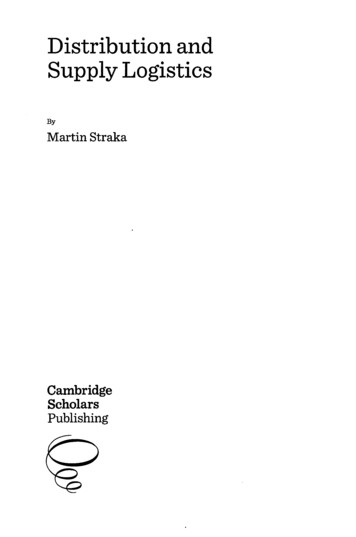

![Index [beckassets.blob.core.windows ]](/img/66/30639857-1119689333-14.jpg)
